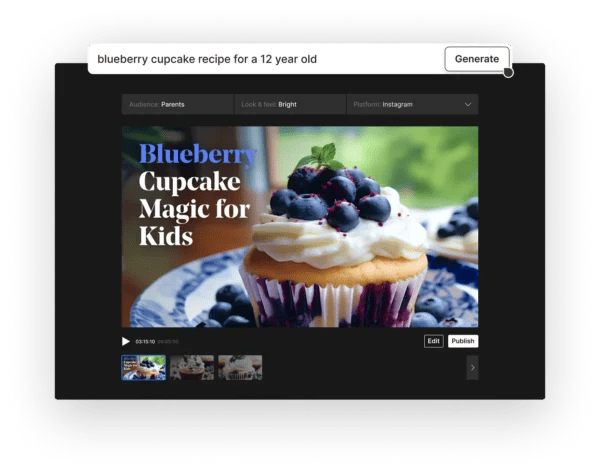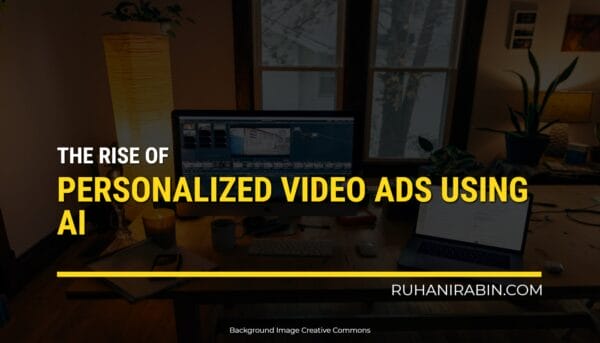In today’s digital era, advertising has become an essential part of our online experiences. From social media platforms to streaming services, numerous advertisements compete for our attention. However, traditional advertising methods often fail to resonate with consumers personally.
That’s where personalized video advertisements, powered by artificial intelligence (AI), have emerged as a game-changer in the advertising landscape. This article will explore the rise of personalized video advertisements using AI, their benefits, implementation strategies, success stories, challenges, and future possibilities.
Understanding Personalized Video Advertisements

Personalized video ads refer to adverts that are tailored to an individual’s preferences, interests, and demographics. Unlike generic ads, personalized video advertisements leverage data and AI algorithms to deliver targeted content that resonates with viewers on a deeper level.
These ads can be customized based on various factors, such as geographic location, browsing history, purchase behavior, and demographic information.
The ultimate goal is to create a more engaging and relevant advertising experience for the viewer. The benefits of personalized video advertisements are manifold. Advertisers offer higher conversion rates, increased brand loyalty, and improved return on investment.
By delivering tailored messages to specific target audiences, advertisers can capture the attention of potential customers more effectively. Consumers, on the other hand, benefit from a more personalized and enjoyable ad experience. They are more likely to engage with ads that align with their interests, leading to a higher likelihood of purchasing or taking a desired action.
AI’s Role in Personalized Video Ads

Artificial intelligence plays a crucial role in creating and delivering personalized video advertisements. AI techniques like machine learning and deep learning enable advertisers to analyze vast amounts of data and extract meaningful insights. These insights help in understanding consumer behavior, preferences, and purchasing patterns, which form the basis for personalizing video ad content.
Machine learning algorithms can process data in real-time, allowing advertisers to adapt their ad content dynamically. This means that ads can be adjusted on the fly based on user interactions or changing market trends. Natural language processing (NLP) and computer vision algorithms enable AI systems to understand and interpret user-generated content, such as comments, reviews, and images.
This further enhances the personalization of video ad campaigns, making them more relevant and engaging.
Implementation of Personalized Video Advertisements

To implement personalized video ads effectively, advertisers need access to a vast amount of consumer data. This data can be collected through various sources, such as website analytics, social media interactions, and customer relationship management systems. Advanced data analytics tools help in processing and analyzing this data to identify patterns and preferences.
However, privacy concerns surrounding the collection and use of personal data are paramount. Advertisers must ensure compliance with relevant regulations, such as the General Data Protection Regulation (GDPR), and obtain user consent for data usage.
Transparency and data security measures are vital to maintaining consumer trust and confidence in personalized video advertisements. Technological advancements have also facilitated the delivery of personalized video ads across multiple platforms and devices.
Programmatic advertising platforms and marketing automation tools enable advertisers to target specific segments and deliver personalized content at scale. The integration of personalization with marketing automation ensures that the right message reaches the right audience at the right time, maximizing the effectiveness of video ad campaigns.
Impact and Success Stories

The impact of personalized video ads using AI has been significant, with numerous success stories emerging across industries. Companies like Netflix and Amazon have mastered the art of personalized video recommendations, leading to increased user engagement and customer retention. To create advertisement videos with the help of Artificial Intelligence, you can use an AI video maker tool for quick & easy AI-based video creation.

Netflix’s recommendation engine, powered by AI algorithms, analyzes user viewing habits and preferences to suggest relevant content, creating a personalized streaming experience.
Personalized video ads have also revolutionized the e-commerce industry. Brands like Nike and Sephora leverage AI-powered personalization to deliver targeted product recommendations and promotions based on customers’ browsing and purchase history. These brands have witnessed a surge in conversions and customer satisfaction by tailoring video ads to individual consumers.
Metrics such as click-through, conversion, and engagement rates serve as critical indicators of the success of personalized video ad campaigns. Studies have shown that personalized video advertisements consistently outperform traditional non-personalized ads regarding these metrics.
For example, a study by Forrester Research found that personalized video ads can generate up to three times the conversion rate of non-personalized ads.
Challenges and Future Possibilities
While personalized video advertisements using AI have gained traction, challenges persist. Advertisers must strike a delicate balance between personalization and privacy, ensuring that user data is handled responsibly. Stricter regulations and evolving consumer expectations necessitate ongoing vigilance in data collection and usage practices.
Additionally, creating compelling and engaging personalized video content requires a deep understanding of target audiences. Advertisers need to invest in data analysis and research to uncover actionable insights that drive effective personalization strategies.
The ongoing development of AI algorithms and advancements in natural language processing and computer vision offer exciting possibilities for further improving the personalization capabilities of video ads.
The integration of personalized video ads with AI-driven chatbots is another area of future possibilities. Chatbots can interact with users in real time, gathering information and providing personalized recommendations within the video ad experience. This level of interactivity and personalization can significantly enhance user engagement and create a seamless path to conversion.
Moreover, the rise of personalized video ads using AI is expected to have a profound impact on the advertising industry as a whole. Traditional mass advertising methods are becoming less effective as consumers become more discerning and demanding personalized experiences.
Advertisers who embrace AI-powered personalization will gain a competitive advantage by delivering more relevant and engaging content to their target audiences.
In addition to its impact on advertisers, the rise of personalized video ads using AI also benefits consumers. Personalized ads reduce the clutter and noise of irrelevant content, allowing users to discover products and services that genuinely interest them.
By tailoring ad experiences to individual preferences, advertisers can create a more positive and enjoyable journey for consumers, increasing satisfaction and brand loyalty.
However, as with any emerging technology, some challenges must be addressed. One of the primary concerns is privacy. Collecting and using personal data for personalized video ads raise ethical and legal considerations. Advertisers must ensure transparency and obtain proper consent from users to collect and utilize their data.
Regulations like the GDPR have been implemented to protect user privacy and data security, and compliance with these regulations is crucial for the responsible implementation of personalized video ads.
Another challenge is striking the right balance between personalization and intrusiveness. While personalized ads can be effective, there is a fine line between providing relevant content and crossing into intrusive territory.
Advertisers must be mindful of the frequency and timing of personalized video ads to avoid overwhelming users or appearing too intrusive. Ad fatigue is a real concern, and managing the frequency and diversity of ad content is essential to maintaining a positive user experience.
Despite these challenges, the future of personalized video ads using AI looks promising. Advancements in AI algorithms, machine learning, and natural language processing will continue to enhance personalization capabilities.
AI will become smarter in understanding user preferences, making more accurate recommendations, and delivering more compelling video ad experiences. Furthermore, integrating augmented reality (AR) and virtual reality (VR) technologies with personalized video ads opens up exciting possibilities.
AR and VR can create immersive and interactive advertising experiences, allowing users to visualize products in their real-world environments or participate in virtual experiences related to the advertised content. This level of engagement can significantly impact consumer perceptions and drive conversions.
Conclusion
The rise of personalized video ads using AI has transformed the advertising landscape. By leveraging data and AI algorithms, advertisers can deliver highly targeted and engaging content to consumers. The benefits are evident, with increased conversions, brand loyalty, and customer satisfaction.
However, the responsible use of consumer data and ongoing innovation will be crucial for the sustained success of personalized video ads. As AI continues to advance and new technologies emerge, personalized video ads are poised to become even more personalized, immersive, and influential in the future of advertising.
Integrating AI with chatbots, AR, and VR technologies will enhance personalization capabilities and create even more immersive ad experiences. Advertisers who embrace AI-powered personalization and adapt to changing consumer expectations will be well-positioned to thrive in an increasingly competitive digital advertising landscape.
The rise of personalized video ads using AI is not just a trend but a fundamental transformation in how we connect with brands and consume advertising content. By leveraging AI’s capabilities, businesses can create compelling video ad experiences that capture attention and build meaningful connections with consumers.
The future is bright for personalized video ads, and advertisers who embrace this transformative technology and prioritize consumer personalization will stand out in a crowded digital advertising space.




